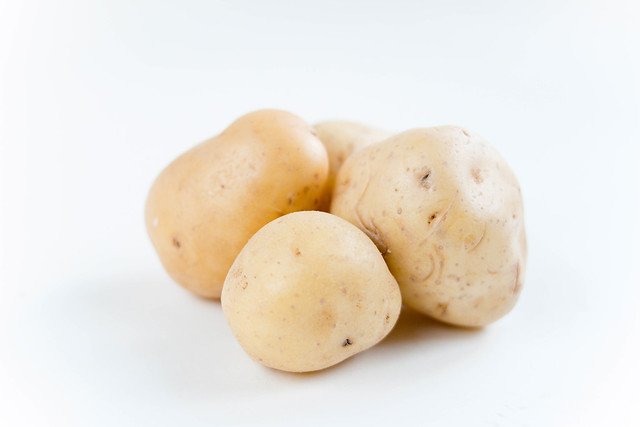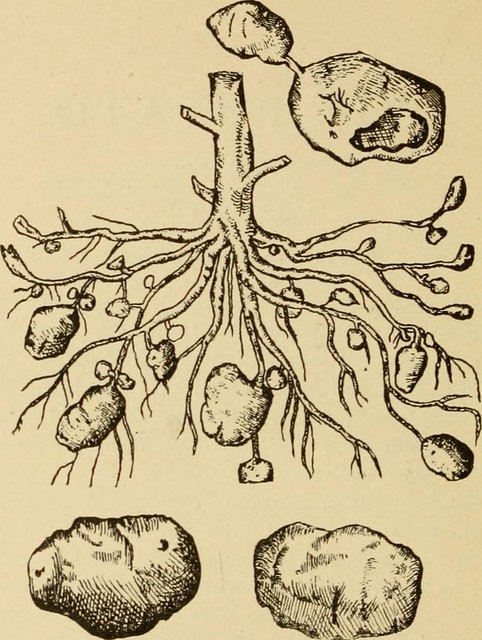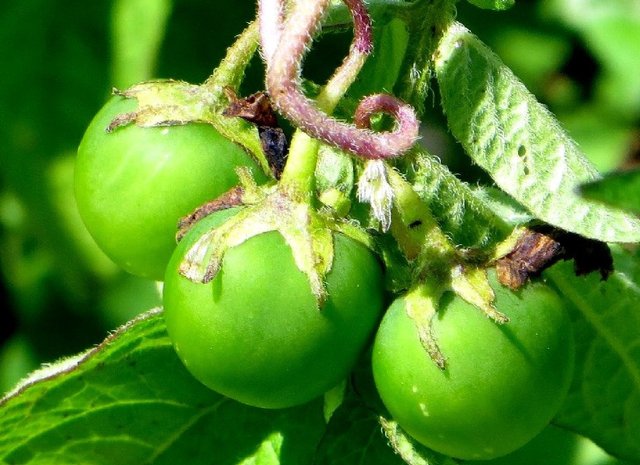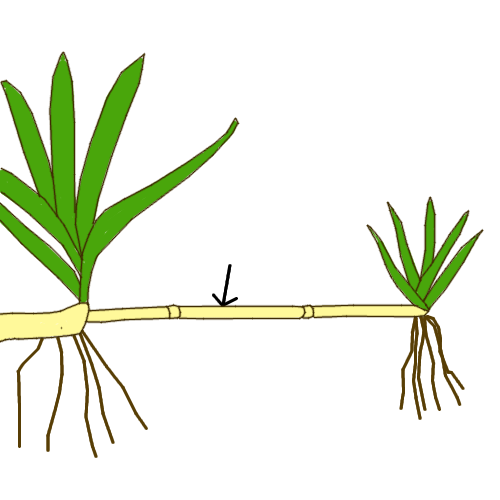Research In Preparation Of Attempting To Grow 100 Pounds of Potatoes In A 4x4 Box
You say potato; I say potato...
I guess that adage doesn't work the same when it is in writing.Kartoffeln / Potatoes

Image Credit: by Marco Verch
I am going to try growing potatoes for the first time ever, this summer. To prepare, I have been doing quite a bit of research to try and figure out the best growing methods so I can get the highest possible yield. Of course, I ran across the plethora of articles about growing 100 pounds of potatoes in a 4 ft by 4 ft box; and, of course, I am interested. On the surface, it seems plausible enough, but further research into the idea turns up very mixed results. Some people swear by the method. Others present videos where they unbox their cluster of potatoes only to reveal that it didn’t work at all. My initial thought is that the truth lies somewhere in the middle, so I have decided that I am going to have to try this out for myself.
To ensure the quality of my experiment, I felt the need to learn a little more about how potatoes grow and what errors those who experienced total failure with the method might have made. This article contains some of the scientific knowledge about potatoes that I feel pertain to my experiment, as well as an explanation of how it has guided my experimental design.
A Little Bit Of History
Where do potatoes originate from? If you had asked me this question yesterday, I would have guessed Ireland. That is generally the country that I’ve heard associated with them the most. Of course, my guess would have been wrong. The progenitors of today’s commonly cultivated potato can actually be traced back to South America with evidence suggesting that people may have been cultivating them as far back as 8000 BC. But, the rest of the world wouldn’t learn about potatoes until the 1500s. It is thought that Spanish Conquistadors discovered them when they conquered Peru in 1536. How potatoes spread from there to Ireland and then the rest of Europe seems to be a bit of a mystery, even though many (probably falsely) claim that they were introduced to Ireland by Sir Walter Raleigh in 1589. Regardless of how they’ve spread, potatoes have become one of the chief caloric staples in the world, becoming the 4th most important food crop and the largest non cereal crop grown in the the world. They are one of the more efficient food crops to grow when it comes to land and water use, yielding 2-4 times the food quantity of grain crops per unit of land while simultaneously requiring less water than almost any other food crop.
Image Credit: Internet Archive Book Images
How Do Potatoes Grow
Today’s domestically grown potato is known scientifically as Solanum tuberosum. It is part of the Solanaceae or nightshade family and is closely related to (within the same genus) as the tomato and eggplant.The potatoes that we eat are both botanical and culinary vegetables; however, they are not a root crop. They are actually modified parts of the stem called tubers. Stem tubers are swollen underground portions of the stem that store nutrients in order to allow the plant to overwinter or survive periods of poor growing conditions.
In potatoes, the part of the plant above ground begins to send new stems called stolons growing downward into the ground. Just below the surface of the ground, the ends of these stolons swell to form up to 20 new tubers that we call potatoes. As the plant’s leaves produce glucose during photosynthesis, they begin pumping the sugars down into the tubers for storage. At the end of the growing season, the above-ground leaves and stems die back, the previous year’s tubers decay, and the newly formed tubers begin to turn all of those stored up sugars into starch. At the start of the next growing season, each of those tubers form buds that we call ‘eyes’. The formation of the eyes also trigger the stored starches to begin to degrade back down into simpler sugars that can be used for nourishment until the plant can support itself. Roots begin to grow from the eyes, and next year’s stems will shoot up above ground. Leaves will grow. New stem shoots will grow into the ground. And, the whole process will start over again.
Potato Reproduction: Seed Potatoes or Potato Seeds
Potatoes can reproduce both sexually and asexually. For industrial producers and home gardeners, the asexual method is by far the most common.Asexual Reproduction By Vegetative Propagation
As previously mentioned, each above-ground plant can produce up to 20 new tubers, and each one of those tubers can form multiple plants the following year. You’re probably aware of this, as most of us have stored our potatoes for too long, and they formed those eyes. The process is called chitting, and the resulting eyed potatoes are what we call seed potatoes. Seed potatoes can be planted whole or you can cut them into chunks containing at least 2-3 eyes. If you do cut them up, you will need to let them sit out for a couple of days to allow the cuts to dry and close up. Alternatively, some resources recommend covering your freshly cut potatoes in horticultural sulfur powder. Either way, the goal is to keep your seed potatoes from picking up soil borne diseases.While this is the way that nearly all commercially grown potatoes are started, the method does have a few drawbacks, mainly stemming from the fact that every potato grown from a tuber is a genetic clone of the parent. So, there’s not a lot of genetic diversity bred into potato plants. If the original mother plant was susceptible to a particular disease, then every other plant down the line will be susceptible to that disease. This was the problem during the irish potato famine in the mid 1800s. In nature, sexual reproduction increases genetic diversity, which increases the chances of individual organisms be resistant to adverse conditions like diseases. That way, if a disease does sweep through the population, a few individuals will be left to start over, and the new population will be stronger. Unfortunately, since virtually all of the potatoes grown in Ireland were clones, almost none of them held any resistance to the late blight caused by Phytophthora infestans mold.
Another problem that we encounter from generation after generation of asexual propagation of potatoes is a buildup of viruses and other diseases. If a plant acquires a virus, that virus will be present in the tubers of the next generation. If the next generation of plants picks up another virus, their tubers will be infected with both viruses. So, over the generations, diseases accumulate, and the health of the entire potato crop suffers.

Image Credit: License: CC0 Public Domain
Sexual Reproduction By Pollination
Even if you’ve grown your own spuds before, you may be surprised to learn that potato plants produce a fruit that looks very similar to a cherry tomato, only they remain green. Inside each of those little fruits, you will find dozens of seeds. The reason many gardeners haven’t seen these poisonous fruits is that we tend to grow our potatoes through the dry heat of summer. However, potato plants enjoy cool, moist weather. So, when facing the brutal North American August sun, the plant may go into survival mode and drop its flowers; choosing to put all of its energy toward staying alive rather than reproduction.So, if vegetative propagation of potatoes has the adverse side effect of accumulating diseases in the plants; and potatoes are capable of reproducing sexually; why don’t we grow our potato crops from potato seeds rather than seed potatoes?
Many of the plants that we grow in our gardens and fields today have been selectively bred to yield a very uniform crop. For heirloom varieties, as long as they are only crossed with other plants of the same variety, they should retain all of the same characteristics from generation to generation. If you buy your garden seeds from a big box shop or hardware store, there is a good chance that your seeds are F1 hybrids. That means that the company selling them cross-pollinated two true-breeding varieties with known genetics to yield seeds with all of the traits they wanted in the new variety. If you collected and propagated seeds from those hybrid plants, it is very unlikely that you would get any plants like the ones you grew last year, even if it self-pollinated. Instead you would end up with a mixture of traits from the F0 generation (the two original plants that were cross pollinated to make the seeds you bought). Farmers have gone to these great lengths to ensure predictability in their crops because it allows them to choose certain traits that meet their specific needs.
We don’t have potatoes dialed in like this. Potato plants just don’t breed true, so when we happen across a plant that has that perfect combination of genetics, it is much easier to clone it than it is to try and hone in those traits through generation after generation of selective breeding.
Optimal Growing Conditions
Potatoes are a cool season plant, preferring temperatures between 45 and 80 degrees F. Because of this, seed potatoes may be planted as early as six weeks before the last frost date as long as soil temperatures are above 40 degrees F, depending on where you live and the variety of potato that you choose.Potatoes grow best in full sun with well-draining soil that is high in organic matter and a bit acidic. The optimal pH range is somewhere between 4.8 and 5.5. As the pH gets more alkaline (higher in number), the occurrence of potato scab increases.
My Little Experiment
According to my research, it seems plausible that one should be able to grow potatoes at different levels in a tower or box system. I know first hand that tomato plants have the ability to sprout roots from their stem. In fact, I had some plants a few years ago that were forming little blisters high up on the stem. When I looked it up, I found that I had been overwatering, and the blisters were where the stems were staying wet and roots were trying to grow. Potato plants, being closely related to tomatoes, have the same ability. The thinking is that if you allow the plant to grow, then it will produce new stolons where the stem meets the ground and potatoes will begin to form. Then, you cover the stem with soil and keep it watered so that it begins to sprout roots in that layer of soil. If this method works as advertised, more stolons should be produced at this new stem-ground interface, and more potatoes will form in the new layer of soil. Theoretically, this process can be repeated in a tower formation throughout the growing season, yielding potatoes in several layers of the soil instead of just one. If that is the case, then it should multiply the number of potatoes you would get from the conventional method of growing potatoes in the garden or field.Importance Of Variety
Potatoes come in many different varieties, but all of them generally fall within one of three categoriesEarly Season
Mid Season
Late Season

Image Credit: RoRo [CC0]
Furthermore, potatoes can be classified as either determinate or indeterminate. According to that classification, determinate plants quit growing after the first set of tubers are formed, leaving behind potatoes in a single layer of the soil. On the other hand, indeterminate plants continue to put on new growth throughout the entire growing season, so they can produce potatoes throughout several layers of soil. It should be noted that there are some naysayers on this topic. They notice that most determinate potatoes are early varieties, and most indeterminate potatoes are late varieties and figure that determinate plants simply mature before they have the opportunity to produce potatoes in multiple layers. However, I found sources (like this document from North Dakota State University Agricultural Department) that use those classifications and explain that the reason determinate plants do not produce potatoes in upper layers of soil is that they quit producing new stolons after the first potatoes form. It seems to me that potatoes can truly be either determinate or indeterminate, much like their cousins, the tomato. So, for my experiment, I will need to be careful to choose a late variety of indeterminate potatoes. Right now, I am considering either Russet Burbank or Kennebec.
Soil Consideration
As previously noted, potatoes tend to grow better in a loamy soil with plenty of organic matter. As Youtuber High Desert Gardener pointed out in his video entitled Responding to the Potato Tower Criticism, in many of the potato unboxing fail videos, the gardeners opened their potato containers to reveal hard, dry, clay heavy soil. To ensure the integrity of my experiment, I must avoid that mistake. Instead, I will mix my own soil consisting of composted cotton hull, mulched leaves and leaf mold, and perhaps a little bit of sand. The result should be a light, fluffy, well draining soil.
Planting
Based on my research, it seems that in order to get the most abundant yield of large potatoes, I need to plant my seed potatoes 12-15 inches apart in rows that are about 3 feet apart. This should give me enough space in my ~4’ x 4’ box to plant 6 - 8 seed potatoes. Most sources that I found estimate that each plant should yield 5-10 pounds of potatoes, so that would give me anywhere from 30 pounds on the low end all the way up to 80 pounds on the high end! Suddenly, a 100 pound yield doesn’t seem as far fetched!Mounding
Even if you are growing a determinate variety of potatoes that will not run up the soil column, it is still important to cover them with about 4 inches of soil. In the presence of sunlight, potato plants produce a toxin called solanine. Any part of the plant that light is able to hit will accumulate this toxin, so the leaves, stems, and tomato-like fruit of the plant are all poisonous. Furthermore, if the underground tubers break through the soil surface, or even if they just grow to close to the surface, they will begin to produce and accumulate solanine. You can tell when a potato is laced with this toxin because it will turn green. The green color isn’t caused by the solanine; it comes from harmless chlorophyll. However, the same conditions that cause chlorophyll to form also cause solanine to be produced. So, your best bet is to avoid eating any part of a potato plant that is green.For my purposes, mounding the dirt will play a second role. I plan on continuously building my mounds as the potato vines continue to grow. Every time the vines grow 6-8 inches above the soil surface, I will build the soil up so that only the top few leaves remain uncovered.
Watering Considerations
Potatoes prefer nice, evenly watered and well draining soil. This has the most potential to be my downfall in this experiment. I am the world’s worst about depending on the rain to water my garden, and if it doesn’t rain for a while, I’ll turn on the sprinkler and forget about it over night, leaving the garden drenched. To help with this, I will not put my potato box directly in the garden to prevent overwatering if I leave the sprinkler on too long. Furthermore, each time I add a new layer to my mound, I will use leaves or pine needles as a mulch to help retain level amounts of moisture.My Prediction
So, there are a couple of things that I am going to look for, here. First of all, there is some controversy over whether potatoes will grow all the way up the covered part of the stem. I am expecting that they will; or that they will at least grow most of the way up the covered portion of the stem. Still, I think that 100 pound number is probably a little bit of an exaggeration; an early form of click bait, if you will. If this tower system of growing potatoes is superior to the conventional method, I would expect to hit right around that high end of 80 pounds upon harvest, and I do think that is very plausible!If you’re interested in the results, I will be collecting data and providing regular updates throughout this process. Updates to the series should appear in the list below as they are posted. Be sure to check them out!
Part 1: Let's Get To Planting!
.jpg)
I think that 100 pound is a little exaggerated too. In my family we've been planting potatoes for ages (I'm 32 and my family planted them even before). We usually plant them in April and harvest them in August - depending on the season and the rain of course. I have never planted a potato in a box so I found your post very interesting. I would actually never even consider that but since I don't live at home anymore and I don't have a garden/field I've been looking for some solution and this sounds reasonable to me. It will of course not compare to the harvest that I'm used to but it would be fun to do :)
Oh, and I didn't know that potatoes were close to tomatoes!
Thank you for sharing all this interesting information and good luck with planting!
Congratulations on your curie vote!
Thank you! {:o)
In your experience, if I am starting with 8 seed potatoes, about how many pounds of potatoes should I end up with?
I really depends on many factors. We have large fields so we tend to grow potatoes each year somewhere else so that the soil can get its nutrients back and 'feed' the potatoes again. I assume that you have good soil so if you water them properly you can get even around 25-30 middle sized potatoes from one potatoe. I would say you could get around 8 pounds from each so maybe around 64 pounds from 8 would be realistic. Maybe even more..
Let me know how it goes :)
This sounds like a fun experiment and it's one that I have wanted to try.
Stay tuned! I'll keep you posted on our progress!
Hi sustainablyyours,
Visit curiesteem.com or join the Curie Discord community to learn more.
Thank you! You guys are awesome!
I read about stem tubers in school, you gave me some reflections of memory lane. This is good and feasible to try,I will see if i can gather the stuff first :)
I think you could use store-bought potatoes if you can't find any certified seed potatoes. I have read that they are chemically treated, so they may have a more difficult time growing; however, I have found potato vines growing in my compost where we have thrown out old potatoes. I think it would be worth a try.
What i find very interesting in your comment is, that you have a compost and you threw potatoes there :p :)
Congratulations @sustainablyyours! You have completed the following achievement on the Steem blockchain and have been rewarded with new badge(s) :
You can view your badges on your Steem Board and compare to others on the Steem Ranking
If you no longer want to receive notifications, reply to this comment with the word
STOPVote for @Steemitboard as a witness to get one more award and increased upvotes!
We were considering to grow potatoes at some point, but our problem consisted at that time in the storage. We were of course not targeting 100 pounds, but in any case we estimated that we needed an appropriate place to store what we harvest if we don't want to stupidly lose everything.
I am not too sure potatoes are still on our to-grow list (we will resurrect our garden very soon, after a break of 3 years), but we will see (and I may let you know in case we consider potatoes eventually). Again, we need to fix the storage issues first, or just do it for fun and feed ourselves during the nice season (which we may do).
In any case, please let me know how much you will get. I am very curious!
Very interesting and informative.
I am looking forward to your results. It would be interesting to see how close to your prediction your yield is.
I grew up in an agricultural town, but potatoes were not among the crops farmers cultivated over there. They said the weather and soil were not good for it.
I have seen many posts here of people literally creating the conditions for certain crops to grow. That is fascinating.
I love potatoes in all its forms of preparations. It must be cool to eat them right from one's own garden
Hi @sustainablyyours!
Your post was upvoted by Utopian.io in cooperation with @steemstem - supporting knowledge, innovation and technological advancement on the Steem Blockchain.
Contribute to Open Source with utopian.io
Learn how to contribute on our website and join the new open source economy.
Want to chat? Join the Utopian Community on Discord https://discord.gg/h52nFrV
hi @sustainablyyours
I love potatoes, I think your project is really interesting! I think I am as confident as you and believe that potatoes will also grow in boxes, they are strong and simple tubers, they have the strength to survive even in difficult environments. And then there will be your love to support them !! :-))) I will wait to know the results !!
Congratulations and thank you for sharing with us
A solid post. Learned several things. Keep us updated!
Use a countdown timer alarm :P